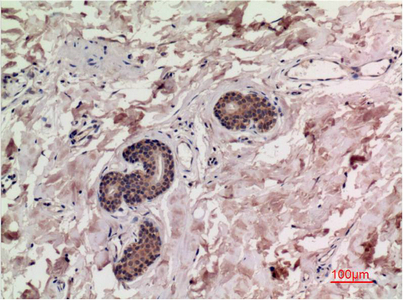SMAD3 Monoclonal Antibody
For reference only. Please follow the manual included in your kit for instructions.
Catalog Number
Product Name
SMAD3 Monoclonal Antibody
Catalog Number
RD85665A
Clonality
Monoclonal
Purification Method
Protein A purification
Isotype
IgG
Host
Mouse
Background
Receptor-regulated SMAD (R-SMAD) that is an intracellular signal transducer and transcriptional modulator activated by TGF-beta (transforming growth factor) and activin type 1 receptor kinases. Binds the TRE element in the promoter region of many genes that are regulated by TGF-beta and, on formation of the SMAD3/SMAD4 complex, activates transcription. Also can form a SMAD3/SMAD4/JUN/FOS complex at the AP-1/SMAD site to regulate TGF-beta-mediated transcription. Has an inhibitory effect on wound healing probably by modulating both growth and migration of primary keratinocytes and by altering the TGF-mediated chemotaxis of monocytes. This effect on wound healing appears to be hormone-sensitive. Regulator of chondrogenesis and osteogenesis and inhibits early healing of bone fractures. Positively regulates PDPK1 kinase activity by stimulating its dissociation from the 14-3-3 protein YWHAQ which acts as a negative regulator.
Immunogen Information
Immunogen
Synthetic Peptide of Smad3
Swissprot
P84022
Synonyms
DKFZP586N0721DKFZp686J10186hMAD 3hMAD-3hSMAD3HSPC193HST17436JV15 2JV15-2JV152LDS1CLDS3MAD (mothers against decapentaplegic Drosophila) homolog 3MAD homolog 3Mad homolog JV15 2Mad protein homologMADmothers against decapentaplegic homolog 3
Observed MW
52 kDa
Applications
Reactivity
Human,Mouse,Rat
Tested Applications
IHC-p
Conjugation
Unconjugated
Dilution
IHC 1:100-200
Concentration
1 mg/mL
Storage Buffer
PBS with 0.02% sodium azide, 0.5% protective protein and 50% glycerol, pH7.4
Storage Instructions
Store at -20°C. Avoid freeze / thaw cycles.

